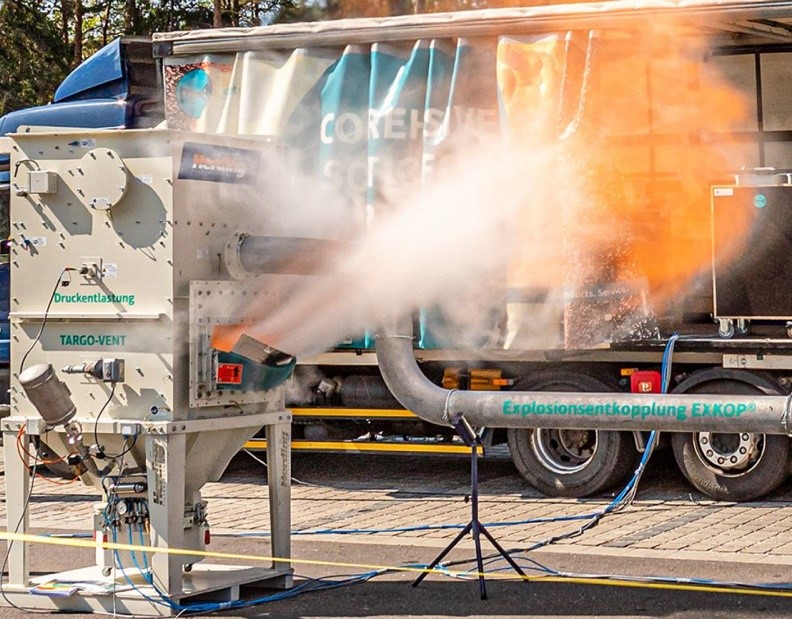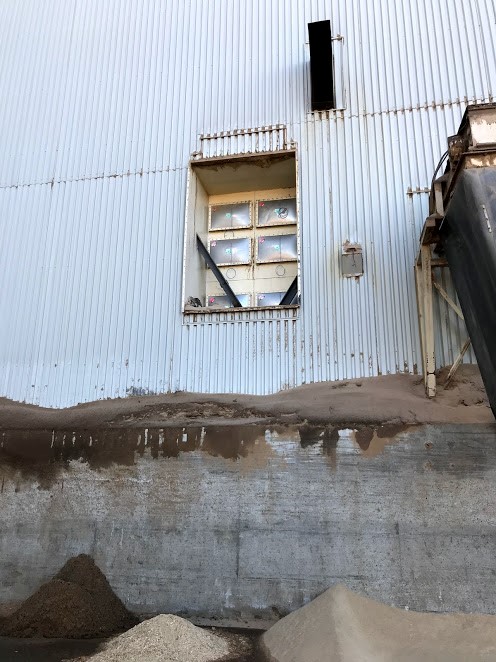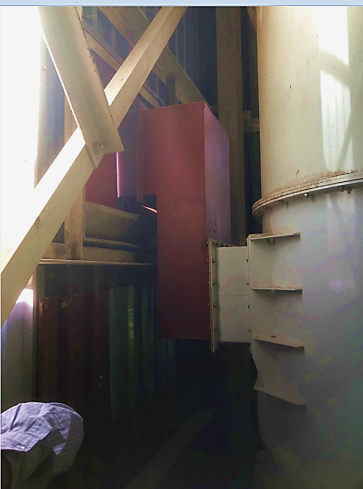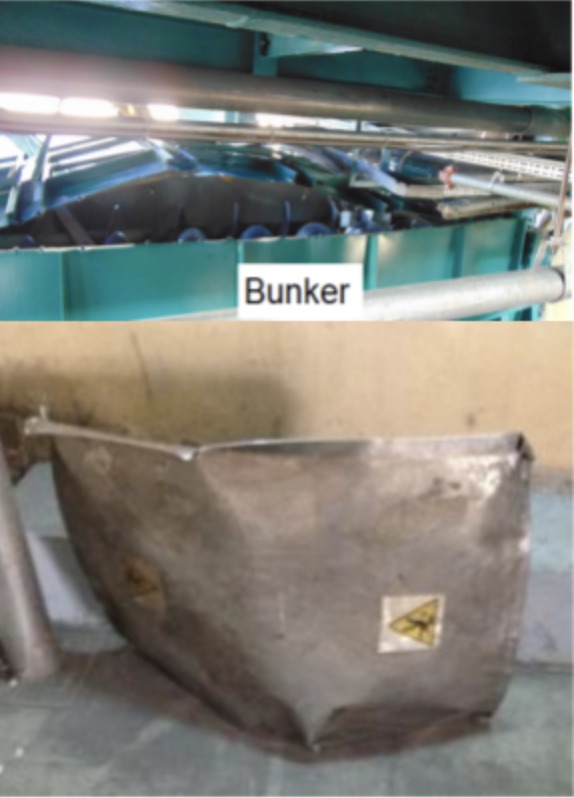
Features
Education
Health and Safety
Sawmilling
Combustible dust explosion protection – why good enough is not good enough
June 22, 2021 By Jeramy Slaunwhite
 Figure 1 - Directional venting with the Rembe Targo Vent. Photos courtesy Rembe.
Figure 1 - Directional venting with the Rembe Targo Vent. Photos courtesy Rembe. Combustible dust explosion risks in industrial processes demand critically important attention to identify and manage the hazards effectively and reliably. A dust hazards analysis (DHA), as described in the National Fire Protection Association (NFPA) 652 Standard on the Fundamentals of Combustible Dust1, builds the framework for dust hazards identification, documentation of existing protection/prevention strategies and recommendations for additional hazard management solutions. Explosion protection concepts and systems are the collection of safeguards to manage the hazards associated with the ignition of primary, secondary or subsequent combustible dust clouds. The effectivity and reliability of protection is only as good as the weakest link, so a reliable protection strategy must inclusively consider the dynamics of an initial dust cloud ignition, function and reliability of the protection system and the residual effects of the event. If corners are cut or something is overlooked, it can not only result in a hazardous situation, but also create a false sense of security under the perception of complete, reliable protection. Simply put, when it comes to explosion protection, “good enough” should never be good enough.
A dust explosion is a highly chaotic event with many influencing variables. The predictability of dust explosions does not necessarily follow a simple mathematical scale factor. Explosion protection systems must be designed and tested for the range of expected conditions and application parameters under which is it to be applied. Outside the range of tested conditions and parameters, there is reduced confidence that the protection system will perform as required.
[Editor’s note: This article is part of Dust Safety Week 2021. Find more articles here.]
For this reason, it is important that explosion protection systems are correctly selected and applied for the specific application within the certified tested parameters. Considering the potential effects and hazards of a dust explosion, performance uncertainty in the protection system simply cannot be tolerated. NFPA standards for explosion protection systems2,3 requires testing and certification for most explosion protection equipment. Some examples include flameless explosion venting devices, explosion isolation valves and active protection systems. These devices must be independently tested by a credible organization according to a published set of testing procedures. This ensures an unbiased reliability of the equipment to perform under the range of tested conditions.
Application, installation and maintenance of explosion protection devices must strictly follow acceptable sizing calculations3, the manufacturers’ certification, installation and maintenance requirements in order to guarantee reliable performance and protection.
Some influencing factors for certified flameless vents include: dust type and characteristics, protected volume, design pressures and device efficiencies. Certification parameters for explosion isolation devices include the above-mentioned influential factors but also include connection pipe parameters such as: installation distances, elbows and fittings, dust concentration, conveying air velocity and pressures.

Figure 2 – obstructed vent panels
Vent panels must be installed so that they can freely open, and the effects of venting discharge must be taken into account. The release of a pressure wave and a fireball must be considered so that residual damage or harm is avoided. Compromised vents such as the obstructed ones shown in Figure 1 above reduces the system’s venting efficiency and reliability. Vent ducts, directional venting, and flameless venting can be used to help manage the safety zone of a vent discharge. The Rembe Targo Vent shown in Figure 2 provides directional vent discharge to manage safety zones.
When vent ducts are used to direct the venting effects to a safe exterior area, additional calculations and considerations must account for the reduced efficiency imposed by the duct. Unlike a standard duct for air movement, a deflagration vent duct is a passageway for a turbulent combustion event. Unburnt dust is projected from the vent into the duct, causing a propagating fireball. Excess turbulence and restrictions from the vent duct can create back-pressure on the relief vent which, if not considered, can

Figure 3 – Poor vent duct design example
reduce venting efficiency and risk vessel over-pressurization. Any accessories such as screens or weather covers added to the end of vent ducts and duct bends must also be accounted for as potential resistance to primary explosion venting. The vent duct shown in Figure 3 is not compliant and would likely result in compromised relief venting, equipment over-pressurization and damage.
The design, materials and construction of explosion vents have an impact on the performance and reliability of protection. Hinge-style doors are inherently higher in mass, which has a direct impact on the venting efficiency. Mechanical components on vent doors such as hinges, springs and latches can add additional friction resistance, especially if corrosion and deterioration occur. Care must also be taken to ensure venting devices do not detach and become projectiles. Venting systems must be carefully designed and documented to ensure the opening pressure tolerance is in accordance with the protection system design. Unapproved vent coverings can lead to equipment failure as shown in the Figure 4 example.
Another factor that must be considered is the recoil force resulting from an explosion venting event. The rapid discharge of combustion gases and material through the vent opening causes an opposing thrust force on the vessel. This recoil force must be calculated and evaluated against the geometry and integrity of the vessel

Figure 4 – Failed bunker from a plain metal sheet vent covering
and footings. For example, a 36-inch x 36-inch vent with an internal venting pressure of only two PSI will result in recoil force on the vessel of more than 3,000 lbs. At 10 feet from the ground, this is 30,000 ft-lbs of torque applied to the footing anchors. The protection system must not be the cause of a catastrophic failure!
The science and knowledge of explosions and protection systems is continuously evolving and expanding with experience, testing, and statistics of past events. Publications such as the NFPA standards1,2,3 serve to guide the industry on the fundamentals of explosion safety. A DHA and associated explosion protection solutions led by competent, qualified person(s) will not only apply the fundamental intentions of the NFPA standards but also evaluate the risk based on the relevance, severity and probability of actual hazards while also considering the consequences to personnel, property and process integrity. A reliable explosion protection system in the event of a dust explosion can mean the difference between clean-up and maintenance activities or injury and extended downtime. Where industrial safety is concerned, any compromise can increase the risk and severity of hazard consequences.
References
- National Fire Protection Association, NFPA 652 Standard on the Fundamentals of Combustible Dust – 2019
- National Fire Protection Association, NFPA 68 Standard in Explosion Protection y Deflagration Venting – 2018
- National Fire Protection Association, NFPA 69 Standard on Explosion Protection Systems – 2019
Jeramy Slaunwhite, P.Eng, is a mechanical engineering graduate from Dalhousie University in Halifax, N.S., with over 13 years of applied engineering experience. Jeramy has developed expertise in manufacturing, consulting and governmental environments in fields including material handling, industrial ventilation, mechanical building systems, energy conservation, and project management. Jeramy’s career focus on industrial combustible dust assessment and design has developed his exceptional familiarity with the NFPA standards for combustible dust safety. Jeramy joined Rembe Inc. in 2018 as their North American explosion safety consultant where he applies his combustible dust knowledge on explosion safety solutions and technical support for various industries and applications with a focus on NFPA compliance and risk management methodology. In addition to being an active member of the NFPA technical committees for agricultural dust and wood materials processing, Jeramy has extensive experience with performing combustible dust hazard assessments and explosion safety engineering design work throughout the western Canada forestry industry.
Print this page